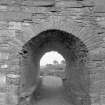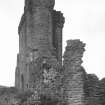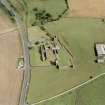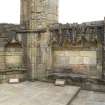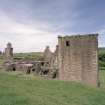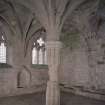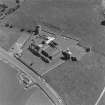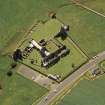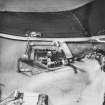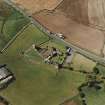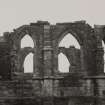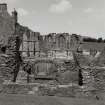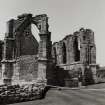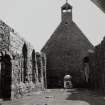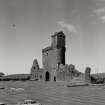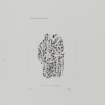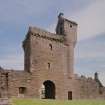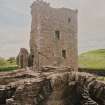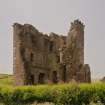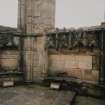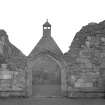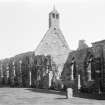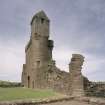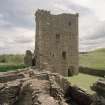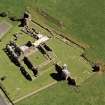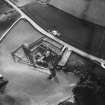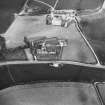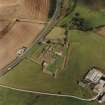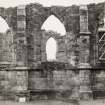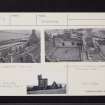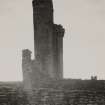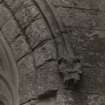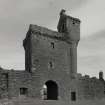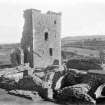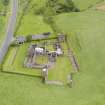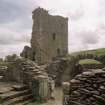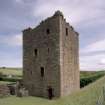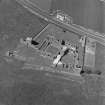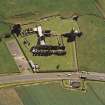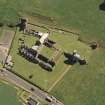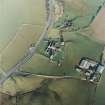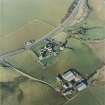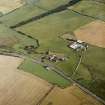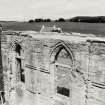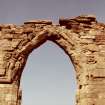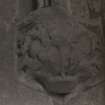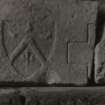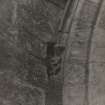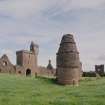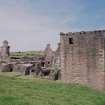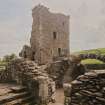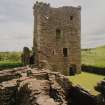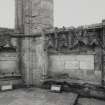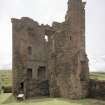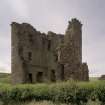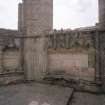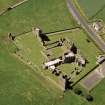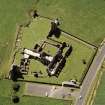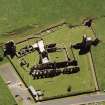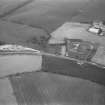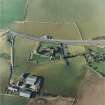Pricing Change
New pricing for orders of material from this site will come into place shortly. Charges for supply of digital images, digitisation on demand, prints and licensing will be altered.
Crossraguel Abbey
Abbey (13th Century)
Site Name Crossraguel Abbey
Classification Abbey (13th Century)
Alternative Name(s) Crossraguel; Corsregal, St Mary's Abbey
Canmore ID 40830
Site Number NS20NE 7
NGR NS 27539 08334
NGR Description Centred on NS 27539 08334
Datum OSGB36 - NGR
Permalink http://canmore.org.uk/site/40830
First 100 images shown. See the Collections panel (below) for a link to all digital images.
- Council South Ayrshire
- Parish Kirkoswald
- Former Region Strathclyde
- Former District Kyle And Carrick
- Former County Ayrshire
NS20NE 7 centred 27539 08334
(NS 2753 0833) Remains of (NAT)
Crossraguel Abbey (NR)
(Cluniac founded 1244)
OS 1:10000 map (1972)
The date of foundation of the Cluniac Abbey of Crossraguel cannot be fixed with precision and the circumstances leading up to it are involved and obscure (I B Cowan and D E Easson 1976). Duncan, Earl of Carrick, gave Crossraguel with other extensive lands and property in Carrick to Paisley Abbey prior to 1214-16. Only a small oratory was established. A dispute between Duncan and the monks was resolved by a judgement by the Bishop of Glasgow in 1244 that the monks of Paisley should build an abbey at Crossraguel. It is not known whether the abbey was in being by 1265 when supplications were being made to Rome by the monks of Paisley. The first abbot comes on record about 1286.
The abbey lay within an extensive walled precinct; there are the remains of a cruciform church of 13th century date; the only substantial remaining features are the two W angles of the nave. The associated buildings were probably of timber. The church, and presumably the other buildings, were destroyed during the War of Independence.
A new church, a simple rectangle, together with the E and S ranges anclosing the cloister and the abbot's house were erected in the 14th century. In the 15th century, the choir was rebuilt with a polygonal E end; the sacristy and chapter house were entirely rebuilt. Improvements were also made to the E and S ranges and to the abbot's house, mainly to the upper floors; corrodiars' houses were also built.
The church was again altered in the 16th century, being divided into two parts by a solid wall; the western part of the church became the Lady Chapel used by both monks and laity. In the SE corner is a tower house, built about 1530, which formed the residence of the last abbots and of the commendators who succeeded them. The gatehouse SW of the cloisters is also of 16th century date, as is the dovecot. (Full description given in the Official Guide by C A R Radford 1974).
The buildings were partly destroyed by Reformers in 1561, though monks continued in occupation until 1592, and in 1617 the whole benefice was annexed to the bishopric of Dunblane.
In 1919, 197 14th century coins and other small objects lost in the abbey latrine were found in a drain which ran eastwards on the S of the cellars. The inclusion of some hitherto unidentified pennies and farthings among coins of James III and IV led Macdonald (1920) to the conclusion that the abbey had its own mint, but modern opinion considers that they were struck at St Andrews by Bishop Kennedy in the second half of the 15th century.
The early forms of the name 'Crossaguel' suggest that it meant the Cross at Riaghail (St Riaghail is a well-known Irish saint, usually identified with St Regulus or Rule). The existence of a standing cross here does not necessarily mean that there was a church on the site when Earl Duncan made his grant.
R B K Stevenson 1952; D MacGibbon and T Ross 1889; 1896
Photographed by the RCAHMS. As described and illustrated.
Visited by OS (JRL) 12 June 1977
A watching brief was carried out by GUARD during widening and resurfacing of the A77 road in the immediate vicinity of the abbey in March 1995. No archaeological features were encountered.
NMRS MS/725/86.
NS 275 083 An archaeological watching brief was carried out by GUARD in March 1995 during resurfacing and widening of the A77 beside Crossraguel Abbey, near Maybole. Earth moving operations did not disturb sufficient soil to expose any archaeological features and no artefactual remains were recovered.
Sponsor: Strathclyde Regional Council.
R James 1995.
NS 2759 0834 The Strathclyde Joint Archaeology Service carried out a watching brief during works in the car park adjoining the E side of the Scheduled Ancient Monument of Crossraguel Abbey. A series of fence post holes were dug through the modern car park surface, but none of the holes penetrated the underlying rubble hardcore.
Sponsor: Strathclyde Roads.
Strathclyde Regional Council SMR 1995.
NS 275 088 A watching brief was carried out in January 2005 at Crossraguel Abbey (NS20NE 7) in support of the forming of a new footpath along the northern boundary of the Guardianship area, adjacent to the A77. No archaeological material was found.
Report to be lodged with WoSAS SMR.
Sponsor: South Ayrshire Council.
R Shaw 2005
EXTERNAL REFERENCES
The National Library of Scotland, Edinburgh, contains in "MSS.3241-3" a collection of sketches by James Nasmyth, some by his father, his brother Patrick, and his sister Jane. In Volume 3241, numbered 96 and 97, and dated 1832, are two sketches of the extensive Ruins of Crossraguel Abbey.
Ayr Public Library - Measured Survey by james A Morris - plans, elevations, sections
Photographed on behalf of the Buildings of Scotland series 2009.
Photographic Record (28 September 1941 - 29 September 1941)
Photographic survey by A Graham, RCAHMS, as part of Emergency Survey programme. Each photographed is detailed in notebook MS 124/2. The photos were taken on Sanderson and Leica cameras.
Aerial Photography (1972)
Oblique aerial photographs of Crossraguel Abbey taken by Mr John Dewar in 1972.
Field Visit (April 1982)
Crossraguel Abbey NS 275 083 NS20NE 7
The abbey was founded in the 13th century, but the remaining buildings are largely of later medieval date and only in the church is any 13th-century work visible. About 1530 a four-storeyed tower-house was built immediately E of the abbot's house, and in the mid-16th century an imposing gatehouse was added.
RCAHMS 1983, visited April 1982
(Blair 1886; MacGibbon and Ross 1887-92, iii, 385-6; MacGibbon and Ross 1896-7, ii, 402-19; Radford 1974; Cowan and Easson 1976, 63-4; Metcalf 1977, 47, no. 185).
Publication Account (1985)
This small Cluniac monastery (only ten monks are on record in the 15th century) was founded in the early 13th century by Duncan, Earl of Carrick, and it was a daughter house of Paisley Abbey (no. 57). Now somewhat reduced by the ravages of time and the stone-robber, the abbey is an interesting example of a compact medieval monastery with a number of features of particular note.
As it stands today, the abbey consists of a church flanked by a cloister and a courtyard (The Inner Court), and separating the two there is a range of buildings which contains (from north to south) the sacristy, chapter house and treasury. To the south-east of the cloister there is a second courtyard)(The South Court) which is flanked by buildings and a strongly defended gatehouse. Acting as sentinels to the whole complex there is a tower-house on the east and a beehive dovecote on the west.
Although the earliest stone buildings were erected in the 13th century, little now remains from this period (the lower courses of the south church wall and its west angles) as the abbey was devastated during the Wars of Independence (1296-1357). In the following century the church was rebuilt, the cloister and Inner Court were erected and, during the 15th century, as the wealth of the abbey increased, buildings were added around the South Court. Perhaps the most interesting of the 15th century buildings are the Corrodiars Houses which occupy the south range of the South Court; such houses are relatively common in England but are only rarely found in Scotland. Corrodiars were retired clerics or laymen who wished to spend their old age within the security of a religious foundation; one such grant of corrody was made to Abbot Roger of Crossraguel who, in 1370, retired to the Abbey of Dunfermline.
Crossraguel's last regular abbot was William Kennedy (1520-47). During his abbacy the nave and choir of the church were divided by a stone wall and the towerhouse, gatehouse and dovecote were added. The tower-house is an unusual feature for a monastery and, together with the gatehouse, may have been built to accommodate the Earl of Cassillis who, as a minor, stayed at Crossraguel for eleven years under the guardianship of his uncle, Abbot William.
Information from ‘Exploring Scotland’s Heritage: The Clyde Estuary and Central Region’, (1985).
Watching Brief (7 March 2011)
NS 2756 0836 A watching brief was maintained on 7 March 2011 during the excavation of a trench for a new information board. Nothing of archaeological interest was recorded.
Archive: RCAHMS (intended)
Funder: Historic Scotland
Kirkdale Archaeology, 2011
Watching Brief (7 March 2014)
A watching brief was maintained during the excavation of a trench to house an information board. Nothing of archaeological interest was encountered during the works.
Information from Oasis (kirkdale1-171296) 5 March 2014









































































































